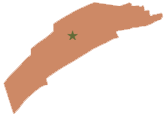Founded in 1931 on Juniata County’s 100th Birthday, the Juniata County Historical Society’s mission is the discovery, preservation, and publication of Juniata County’s history.
Juniata County Historical Society
Mifflintown, Pennsylvania

Fall Dinner Tickets now available for purchase!
Learn about the history of WJUN Radio of Mexico, as shared by Robert N. Sieber.
Visit the Archives to purchase for $25 each, by the October 22nd Deadline.
Click here to learn more!
Founded in 1931 on Juniata County’s 100th Birthday, the Juniata County Historical Society’s mission is the discovery, preservation, and publication of Juniata County’s history.
